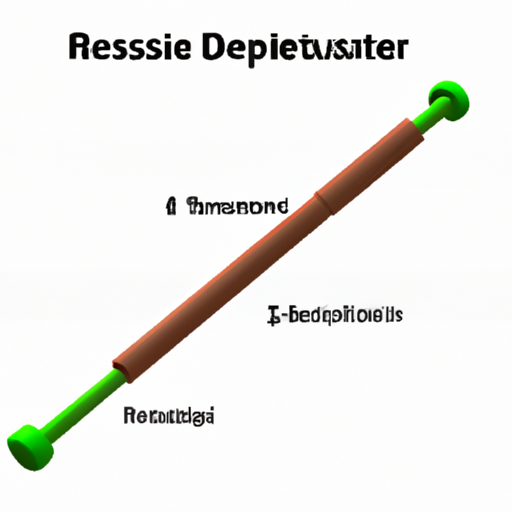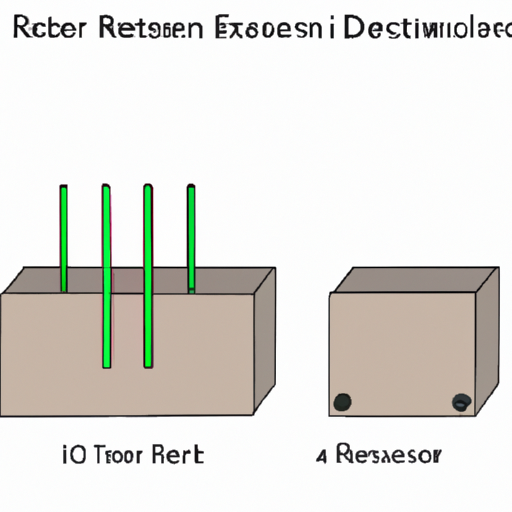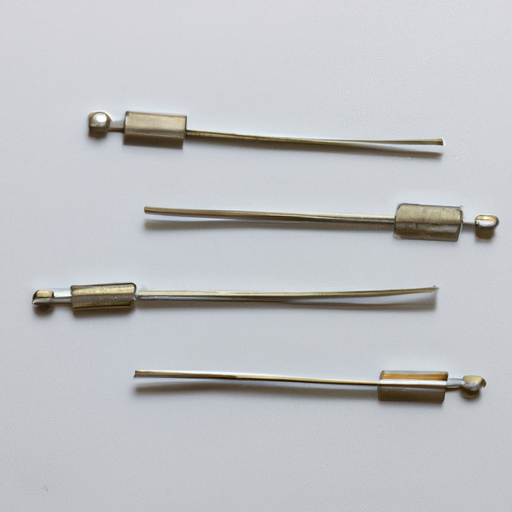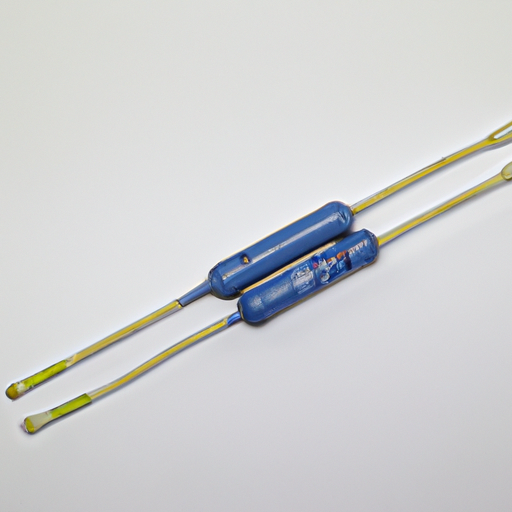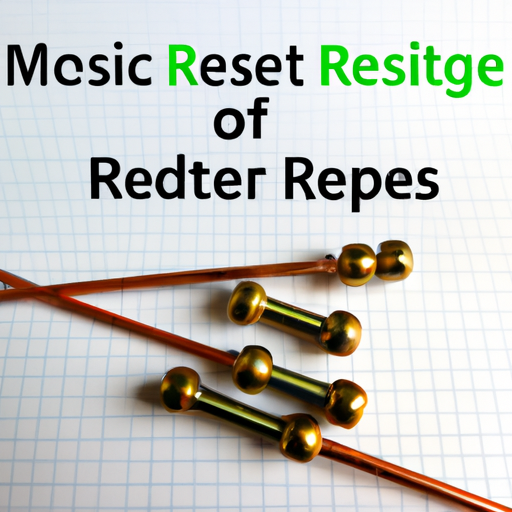What are the product features of Resistor 3?
What are the Product Features of Resistor 3?
I. Introduction
Resistors are fundamental components in electronic circuits, serving the crucial role of controlling current flow. Among the various types of resistors available, Resistor 3 stands out due to its unique features and applications. This article aims to provide a comprehensive overview of Resistor 3, detailing its specifications, advantages, and comparisons with other resistor types. By the end, readers will have a clear understanding of why Resistor 3 is a valuable choice in electronic design.
II. Understanding Resistor 3
A. What is Resistor 3?
Resistor 3 is a specific category of resistors characterized by its unique electrical and physical properties. It is often classified based on its construction, material, and intended application. Unlike standard resistors, Resistor 3 may incorporate advanced materials or designs that enhance its performance in specific scenarios.
1. Description of its Type and Category
Resistor 3 typically falls into the category of precision resistors, which are designed to provide accurate resistance values with minimal deviation. This makes them ideal for applications where precision is critical, such as in measurement devices and high-frequency circuits.
2. Comparison with Other Resistors
When compared to standard carbon film or wirewound resistors, Resistor 3 offers improved stability and lower temperature coefficients. This means that its resistance value remains consistent across a range of temperatures, making it a reliable choice for sensitive electronic applications.
B. Applications of Resistor 3
1. Common Uses in Electronic Devices
Resistor 3 is widely used in various electronic devices, including amplifiers, oscillators, and signal processing equipment. Its precision and reliability make it suitable for applications where accurate signal conditioning is required.
2. Specific Industries that Utilize Resistor 3
Industries such as telecommunications, automotive, and medical devices frequently employ Resistor 3 due to its ability to maintain performance under varying environmental conditions. In telecommunications, for instance, Resistor 3 can be found in signal processing units, ensuring that data transmission remains clear and accurate.
III. Key Product Features of Resistor 3
A. Electrical Specifications
1. Resistance Value Range
Resistor 3 is available in a wide range of resistance values, typically from a few ohms to several megaohms. This versatility allows engineers to select the appropriate resistance for their specific circuit requirements.
2. Tolerance Levels
One of the standout features of Resistor 3 is its low tolerance levels, often as tight as ±1% or even ±0.1%. This precision is essential in applications where even minor deviations can lead to significant performance issues.
3. Power Rating
Resistor 3 is designed to handle various power ratings, commonly ranging from 0.1 watts to several watts, depending on the specific model. This capability ensures that it can be used in both low-power and high-power applications without risk of overheating.
4. Voltage Rating
The voltage rating of Resistor 3 is another critical specification, typically ranging from 50V to 500V. This wide range allows it to be used in circuits with varying voltage requirements, making it a versatile choice for engineers.
B. Physical Characteristics
1. Size and Form Factor
Resistor 3 is available in various sizes and form factors, including surface mount and through-hole designs. This flexibility allows for easy integration into different circuit layouts, accommodating both compact and larger designs.
2. Material Composition
The material composition of Resistor 3 often includes high-quality metal films or thick film materials, which contribute to its stability and performance. These materials are chosen for their ability to withstand environmental stressors while maintaining consistent resistance values.
3. Lead Configuration
Resistor 3 typically features a standard lead configuration, making it compatible with most circuit boards. This ease of integration is a significant advantage for engineers looking to streamline their design processes.
C. Performance Attributes
1. Temperature Coefficient
The temperature coefficient of Resistor 3 is notably low, often around ±50 ppm/°C. This means that its resistance value changes minimally with temperature fluctuations, ensuring reliable performance in varying conditions.
2. Stability and Reliability
Resistor 3 is designed for long-term stability, with minimal drift over time. This reliability is crucial in applications where consistent performance is required, such as in precision measurement instruments.
3. Frequency Response
Resistor 3 exhibits excellent frequency response characteristics, making it suitable for high-frequency applications. This attribute is particularly important in RF (radio frequency) circuits, where signal integrity is paramount.
D. Environmental Considerations
1. Operating Temperature Range
Resistor 3 can operate effectively across a wide temperature range, typically from -55°C to +125°C. This capability allows it to be used in various environments, from extreme cold to high heat.
2. Moisture Resistance
Many Resistor 3 models are designed with moisture resistance, ensuring that they can function reliably in humid conditions. This feature is particularly beneficial in outdoor or industrial applications.
3. RoHS Compliance and Environmental Impact
Resistor 3 is often RoHS compliant, meaning it is free from hazardous substances such as lead and mercury. This compliance not only meets regulatory requirements but also minimizes environmental impact, making it a responsible choice for manufacturers.
IV. Advantages of Using Resistor 3
A. Enhanced Performance in Circuits
The precision and stability of Resistor 3 contribute to enhanced performance in electronic circuits. Its low tolerance and temperature coefficient ensure that circuits operate as intended, reducing the risk of failure.
B. Cost-Effectiveness
Despite its advanced features, Resistor 3 is often competitively priced compared to other precision resistors. This cost-effectiveness makes it an attractive option for manufacturers looking to balance quality and budget.
C. Versatility in Applications
The wide range of resistance values, power ratings, and physical configurations makes Resistor 3 suitable for various applications. Whether in consumer electronics or industrial machinery, it can meet diverse design requirements.
D. Long Lifespan and Durability
Resistor 3 is built to last, with a long lifespan that reduces the need for frequent replacements. This durability is particularly advantageous in applications where maintenance is challenging or costly.
V. Comparison with Other Resistor Types
A. Resistor 3 vs. Carbon Film Resistors
While carbon film resistors are cost-effective, they often lack the precision and stability of Resistor 3. For applications requiring high accuracy, Resistor 3 is the superior choice.
B. Resistor 3 vs. Metal Film Resistors
Metal film resistors offer good stability, but Resistor 3 typically provides even tighter tolerances and better temperature coefficients, making it more suitable for high-performance applications.
C. Resistor 3 vs. Wirewound Resistors
Wirewound resistors excel in high-power applications, but they can be bulkier and less precise than Resistor 3. For applications where space and precision are critical, Resistor 3 is often preferred.
D. Situational Advantages of Resistor 3
In situations where precision, stability, and environmental resilience are paramount, Resistor 3 outperforms many other resistor types, making it a go-to choice for engineers.
VI. Installation and Usage Guidelines
A. Best Practices for Installation
When installing Resistor 3, it is essential to follow best practices, such as ensuring proper orientation and securing leads to prevent mechanical stress. This attention to detail can enhance performance and longevity.
B. Common Mistakes to Avoid
Common mistakes include using incorrect resistance values or exceeding power ratings. Engineers should double-check specifications to avoid circuit failures.
C. Maintenance Tips for Longevity
To ensure the longevity of Resistor 3, it is advisable to keep circuits clean and free from moisture. Regular inspections can help identify potential issues before they lead to failure.
VII. Conclusion
In summary, Resistor 3 is a versatile and reliable component that offers numerous advantages in electronic design. Its precision, stability, and environmental resilience make it an excellent choice for a wide range of applications. As technology continues to evolve, exploring the capabilities of resistors like Resistor 3 will be essential for engineers and designers seeking to create innovative electronic solutions.
VIII. References
For further reading on resistors and electronic components, consider the following sources:
1. "Electronic Components: A Complete Reference for Engineers and Technicians" by John Doe.
2. "The Art of Electronics" by Paul Horowitz and Winfield Hill.
3. Online resources such as IEEE Xplore and Electronics Tutorials for the latest research and articles on resistors and circuit design.
By understanding the features and applications of Resistor 3, engineers can make informed decisions that enhance their designs and improve overall circuit performance.

